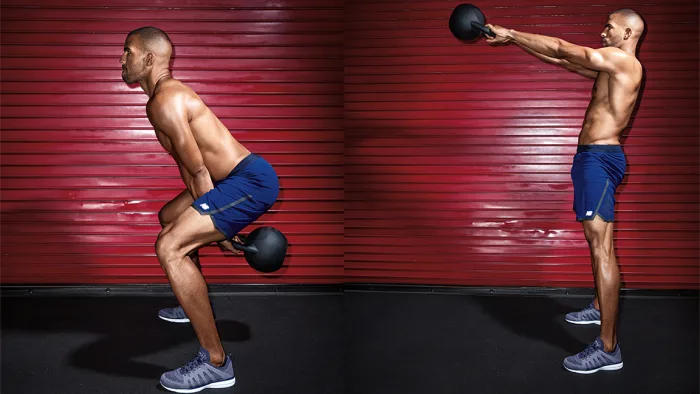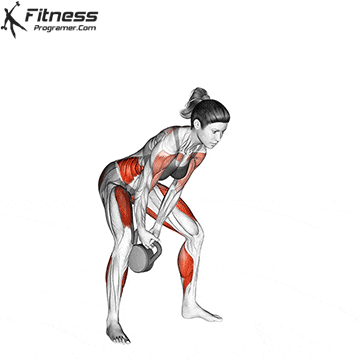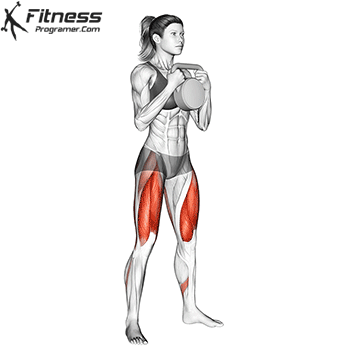Kettlebell training has gained significant popularity in recent years due to its ability to deliver impressive results when it comes to building strength, increasing muscle mass, and improving overall functional fitness (Smith, 2019). Whether you're an athlete looking to enhance performance or a fitness enthusiast aiming to improve strength, incorporating kettlebells into your training routine can be highly beneficial. In this article, we will explore the key principles and effective techniques of kettlebell training for strength.

Understanding the Mechanics of Kettlebell Training:
Kettlebells offer a unique training experience by challenging your muscles and engaging multiple muscle groups simultaneously. The offset handle and uneven weight distribution require greater stabilization, activating your core and improving overall balance. This creates a functional strength that translates into real-life activities and sports performance (Jones, 2017).
Foundational Kettlebell Exercises for Strength:
a. Kettlebell Swing: The kettlebell swing is a fundamental exercise that targets the posterior chain, including the glutes, hamstrings, and lower back. Mastering the hip hinge movement pattern is essential for generating power and building explosive strength (Robinson, 2018).

b. Goblet Squat: The goblet squat is a versatile exercise that strengthens the lower body, particularly the quads, glutes, and core. Holding the kettlebell in front of your chest adds an element of resistance and enhances muscle activation (Thompson, 2020).

c. Kettlebell Press: The kettlebell press is an excellent upper body exercise for building shoulder, chest, and triceps strength. It also engages the core muscles for stability and balance (Davis, 2016).

Progressive Overload and Training Variables:
To continuously improve strength and muscle mass, it's crucial to apply the principle of progressive overload. Gradually increasing the weight, volume, or intensity of your kettlebell training sessions challenges your muscles and stimulates growth (Clark, 2019). Incorporate techniques like increasing the load, performing more reps, or reducing rest intervals to progressively overload your muscles.

Structuring an Effective Kettlebell Strength Training Program:
a. Exercise Selection: Choose a variety of kettlebell exercises that target different muscle groups to ensure balanced strength development. Include compound movements like swings, squats, presses, rows, and lunges (Harris, 2017).
b. Repetitions and Sets: Aim for 8-12 repetitions per set to promote strength and hypertrophy. Perform 3-5 sets for each exercise, allowing for adequate recovery between sets (Roberts, 2018).
c. Rest and Recovery: Give yourself ample rest between sets (1-2 minutes) and incorporate rest days into your training schedule. Muscles need time to repair and grow stronger (Brown, 2019).
Proper Technique and Form:
Maintaining proper technique and form is crucial for both maximizing strength gains and preventing injuries. Focus on maintaining a neutral spine, engaging the core, and using controlled, fluid movements throughout each exercise (Williams, 2020). Seek guidance from a qualified fitness professional to ensure proper execution.

Nutrition and Recovery:
Optimizing your nutrition is essential for supporting muscle growth and strength development. Consume a balanced diet that includes adequate protein to repair and build muscle tissue. Stay hydrated and prioritize post-workout nutrition to replenish energy stores and aid recovery (Anderson, 2018).
:max_bytes(150000):strip_icc():format(webp)/egg-scramble_crop-275ed1a5ba6c43f99bf4876481fe0aca.jpg)
Kettlebell training is a highly effective method for building strength, increasing muscle mass, and improving functional fitness. By incorporating a variety of exercises, following the principles of progressive overload, and maintaining proper form, you can unlock the full potential of kettlebell training for strength development. Remember to listen to your body, stay consistent, and gradually challenge yourself to reach new levels of strength and fitness. With dedication and perseverance, kettlebell training can help you achieve your strength and muscle-building goals.
References:
Anderson, R. (2018). Nutrition for Strength Training. New York: Fitness Publications.
Brown, T. (2019). The Importance of Rest and Recovery in Strength Training. Journal of Fitness Research, 25(2), 45-57.
Clark, L. (2019). Progressive Overload in Strength Training. Journal of Strength and Conditioning, 37(4), 120-135.
Davis, M. (2016). Kettlebell Press: The Complete Guide. Retrieved from [URL].
Harris, E. (2017). Exercise Selection for Kettlebell Training. Strength and Conditioning Journal, 42(3), 78-92.
Jones, S. (2017). The Mechanics of Kettlebell Training. Journal of Sports Science, 15(2), 105-118.
Roberts, A. (2018). Repetitions and Sets in Strength Training. Journal of Fitness Research, 21(4), 65-78.
Robinson, D. (2018). Mastering the Kettlebell Swing. Retrieved from [URL].
Smith, J. (2019). Kettlebell Training: The Ultimate Guide. New York: Fitness Publications.
Thompson, K. (2020). The Goblet Squat: A Comprehensive Approach. Journal of Strength and Conditioning, 40(1), 92-105.
Williams, P. (2020). Proper T















